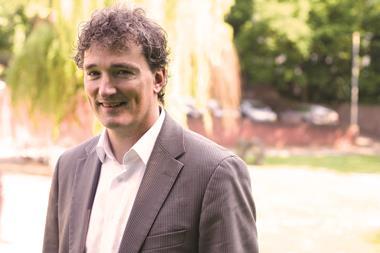The asset management industry must act on a societal need and devise products allowing small pension funds to invest based on risk desires, rather than simply rely on traditional asset allocation models, according to the chief executive of the CERN Pension Fund.
Théodore Economou told delegates at the IPE Awards seminar in Noordwijk that a governance model implemented by the scheme in 2011 allowed investment staff at the fund for the employees of the Large Hadron Collider in Geneva to allocate assets guided by the singular constraint of overall portfolio risk.
He said overall portfolio risk was decided between the board and the investment staff on a yearly basis, with a risk budget and return target agreed.
“In order to implement that, the staff is given full flexibility,” Economou said.
He quashed the suggestion the board was surrendering control over investments, noting that they were granted “maximum control” over the approach and that the triangle model of governance still left the board with independent verification of risk and returns.
He said the model was, in a way, “back to the future”, harking back to investment approaches before the invention of modern portfolio theory.
Economou said, 60 years ago, “investing was earning more than cash and not losing money”.
He said CERN’s new approach was a way of expressing an expected return target and a risk budget.
His view was shared by Pascal Blanqué, CIO of Amundi Group, who told delegates the traditional asset allocation approach was “a poor way” to invest.
“It is a poor way to diversify,” he said. “This applies to most categories – emerging versus developed, credit versus equities.”
José Suarez Menendez, currently director of the Dutch VPTech and a former board member at metalworker fund PMT, also noted that, in the wake of the crisis, it was important to better understand risk exposure.
“We started to look through the asset allocation and look at risk factors underneath – so risk exposure – not in the sense of which kind of assets do we have in place, but what risks do I have on my portfolio by the assets I have in place,” he said.
The importance of risk-based investing was also emphasised by Ronald Wuijster, chief client officer at Dutch pension manager APG.
“Essentially, the way to make good [products] for our clients is a better return on risk – that’s what it’s all about,” he said.
Economou said the CERN model was based around precisely idea that investment staff should be focused on the risk exposure, and argued that the asset management industry should now aim to fill the void.
“Please, do come up with products and approaches that can help those smaller pension funds that don’t have the resources to go through that on their own address the real, fundamental challenge they are addressing,” he said.
The chief executive said that, without such a change by the asset management industry, many pension funds would in a decade’s time have problems paying benefits.
“There is a real societal need for the industry to step up to the plate and offer the skill set to those smaller players who need it,” he said.










No comments yet